Improving Health and Equity with Better Building Products

Image from Pexels
 This article is based on a report by Habitable “Advancing Health and Equity through Better Building Products” and aims to reveal the current state of building materials used, with almost 70% of typical products in the categories analyzed containing or relying on the most hazardous chemicals. The report offers recommendations on how the real estate sector can start promoting healthier products by “stepping up from red-ranked products,” which are the most damaging and polluting at every stage of their life cycle according to Habitable’s research and Informed™ product guidelines.
This article is based on a report by Habitable “Advancing Health and Equity through Better Building Products” and aims to reveal the current state of building materials used, with almost 70% of typical products in the categories analyzed containing or relying on the most hazardous chemicals. The report offers recommendations on how the real estate sector can start promoting healthier products by “stepping up from red-ranked products,” which are the most damaging and polluting at every stage of their life cycle according to Habitable’s research and Informed™ product guidelines.
The goal of Habitable (previously Healthy Building Network) was to evaluate the sorts of building goods currently used in housing development and their environmental impact.
They assessed the building components used and looked at the chemical composition of items in five categories:
1- Flooring
2- Paint
3- Worktops
4- Insulation
5- Water pipes
By using Habitable’s Informed™ materials modeling, which rates the health implications of products from worst- (red) to best-in-class (green). The effects of hazardous chemicals are considered throughout the whole product life cycle by Informed™, from extraction and manufacture to installation, occupation, and end of life.
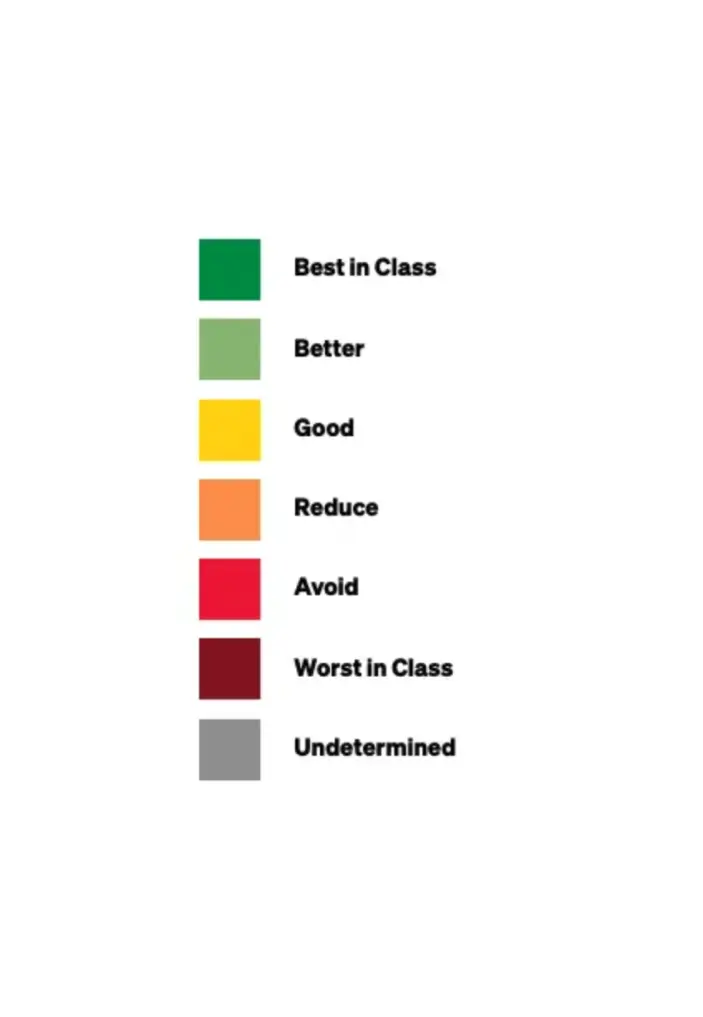
Rating Illustration from Habitable’s Report
This report’s goal is to expand knowledge of the existing condition of the items being used, which will facilitate participation in co-designing an improvement strategy.
Key findings include:
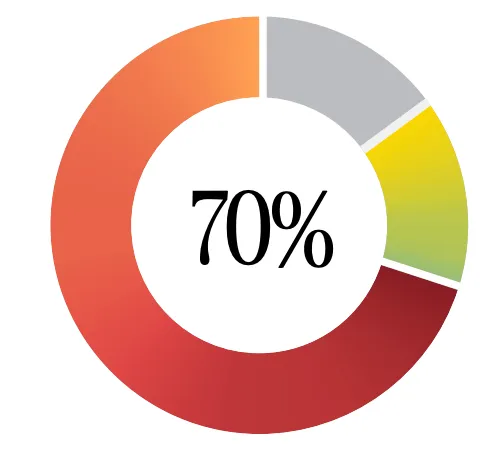
15% of product types are shown as grey because there was insufficient data to determine whether they should be ranked as “preferred” (yellow and green) or as highly polluting (red and orange).
The Bad News
Throughout projects and product categories, red and orange-ranked products — the most damaging and polluting — were common, particularly in flooring and water pipes. According to Informed™, nearly 70% of the product types that are often described across all five product categories are ranked red or orange.
The Positive News
About 15% of product categories have “preferred materials” that are rated green or yellow. These better options could be found in the paint and attic insulation categories of the projects that were examined. Furthermore, safer material selection was driven by the need to comply with Enterprise Green Communities requirements through the MN Overlay.
The Fantastic News
If you know what to look for, there are many healthy product options that satisfy cost and performance requirements. You can browse beautiful and sustainable building materials on 2050 Materials platform.
Systematic Problem
There are underlying, systemic issues that perpetuate the harms to people and the environment caused by toxic chemicals in construction materials throughout the product life cycle, ranging from a lack of transparency to insufficient government control.
Nonetheless, with the appropriate information and resources, we can improve the trajectory of healthy community development.
Reasons Why it Matters
The whole stock of buildings on Earth is expected to quadruple by 2060, adding 2.5 trillion square feet of new construction, according to United Nations estimates. It is crucial that we keep in mind how each structure affects overall human and environmental health while making decisions about specific projects on a day-to-day basis. This includes considerations for the building’s design, construction, usage, demolition, and disposal.
People who use toxic building supplies are exposed to chemicals at significant points in their lives. These substances have been linked to a number of illnesses and health effects, including hormone interference, cancer, immunosuppression, and reproductive problems.
Actions You Can Take
In the face of challenges, there’s always something we can do:
1- Find out how your products stack up in terms of possible health effects. 2- Go to safer selections by moving up from red-ranked product types.
Decades of thorough research on the health effects of chemicals on building occupants, fence line communities, and workers throughout the product life cycle are compiled in the user-friendly red-to-green color ranking.
Move up from red; this is an important initial step. Choose the product types that are graded green and yellow next.
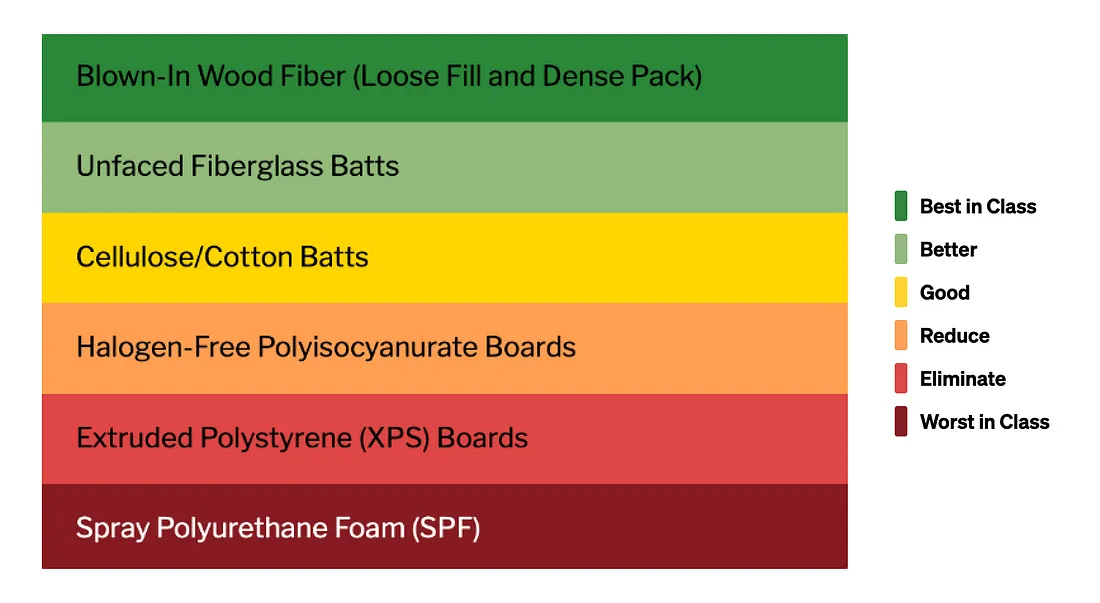
Access the Product Guidance pages by Habitable that will help you learn more.
Research Results
A comprehensive summary of Habitable’s baseline results is given in Table 1. It contains the product types — flooring, paint, countertops, insulation, and water pipes — along with their Informed™ color rankings. Wherever feasible, product kinds are arranged according to where they are meant to be used. Refer to Appendix A in the original report for further information on the process followed in order to establish the baseline.
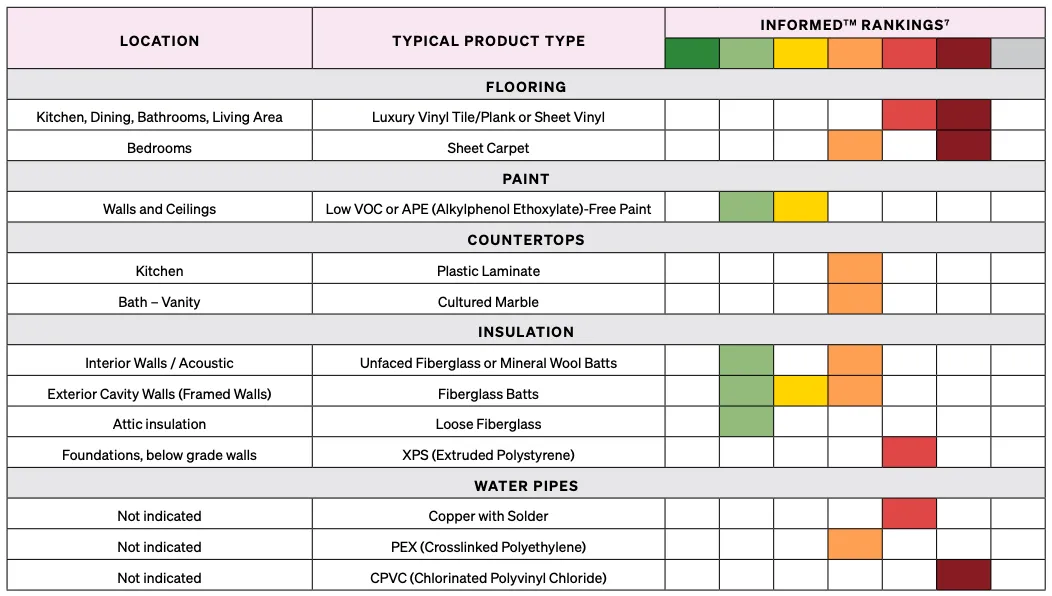
Table 1. Baseline Findings by Habitable
Green Building Standards Affect Systems Transformation
Projects that receive financing from MHFA for capital improvements or the Housing Tax Credit allocation are required to comply with the Enterprise Green Communities standard.
This standard’s 2015 iteration had to be met by the projects under assessment. Paints ranked yellow were motivated to meet mandatory material health criteria requiring low volatile organic compound (VOC) content. This improved the baseline for the materials used in these projects.
Such standards have the potential to further impact the choice of safer product categories. For instance, formaldehyde, a known carcinogen, must not be present in fiberglass or mineral wool batt insulation according to the 2020 edition of Enterprise Green Communities.
Enterprise Green Communities Certification is available for any housing project in the United States that includes affordable dwelling units.
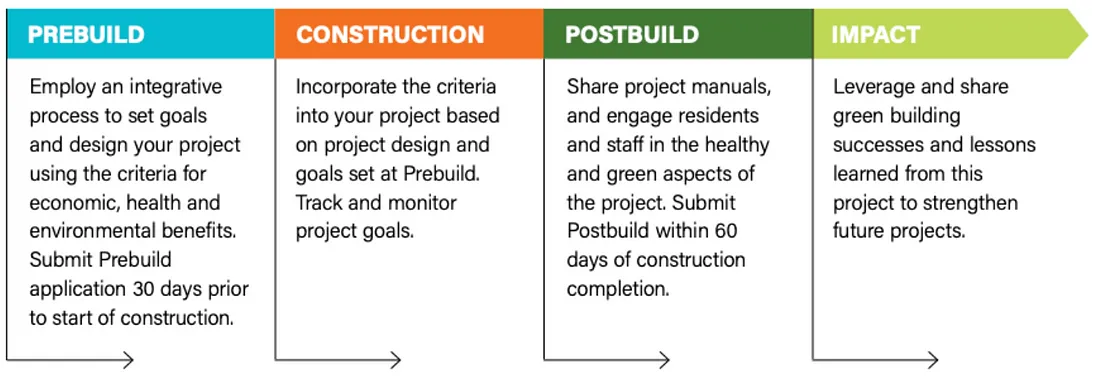
Two levels of certification are available: Enterprise Green Communities Certification and Enterprise Green Communities Certification Plus. The new “Plus” level of certification recognizes significant achievement for projects that meet all certification requirements and have invested in deep levels of energy efficiency, a critical strategy in climate change. Illustration by Enterprise.
Commonly used insulation for interior walls is now ranked in the light green category upon need of meeting this criterion.
Resolving Industry-Wide Systemic Issues
The existing regulatory system treats chemicals as deemed harmless until proven otherwise, perpetuating a dangerous status quo rather than proactively protecting against possible risks. This reactive strategy produces a system of problems that go beyond a lack of governmental supervision, leaving us to deal with crises after they arise.
The widespread use of hazardous chemicals in building materials is also largely a result of unstable product economies that support low-cost, disposable commodities and systems that do not hold manufacturers responsible for the chemical effects of their products. While we strive for a time when the environment and human health are better safeguarded from hazardous chemicals, project teams — including architects, contractors, and real estate developers — are currently responsible for identifying and avoiding dangerous materials.
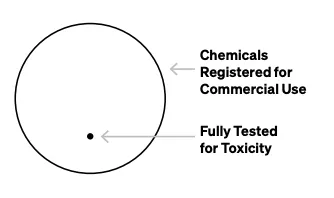
Unfortunately, contrary to popular belief, chemicals utilized in building materials have not undergone safety testing. The majority of the tens of thousands of chemicals that are registered with the EPA for commercial use have not undergone sufficient testing to determine their impact on human health. Figure taken from Habitable’s report
Getting over the legacy challenges and into successful solutions
With the use of Informed™ coaching, we can now overcome numerous historical factors:
Lack of Transparency
Historically, information about the chemical composition and related effects of the building goods that manufacturers produce has been difficult to obtain.
The majority of construction products still lack complete or partial public information about their chemical composition, despite advances in transparency brought about by customer demand. This is because of supply chain complexity and company confidentiality claims.
Confusion in the marketplace
Due to the abundance of certifications and regulations that have varying degrees of rigor, which overcrowds the market, confusion is created. Furthermore, marketing materials from manufacturers sometimes exaggerate the ecological and health benefits of their products (a practice known as “greenwashing”). Project teams find it challenging to choose and firmly identify safer products as a result.
Limited Life Cycle Analysis
Currently, a lot of product certifications and disclosures concentrate on the chemical composition of completed goods rather than taking into account the effects of chemicals at different stages of the product’s life cycle. In actuality, the product life cycle is typically seen through the perspective of embodied carbon, which ignores additional “embodied chemical impacts” or “embodied injustices” brought about by chemicals at other points in the supply chain. A healthy product economy must consider the entire life cycle of the product as we commit to advancing environmental justice and health equity.
2050 Materials provides a solution to these challenges by providing a free-to-access web application which hosts the largest database of sustainability data around construction materials, empowering architects and quantity surveyors with specification, comparison, and Whole Life Cycle Assessment tools. We offer a comprehensive range of third-party verified building products, aiding professionals in selecting environmentally friendly, socially responsible, and economically viable materials.
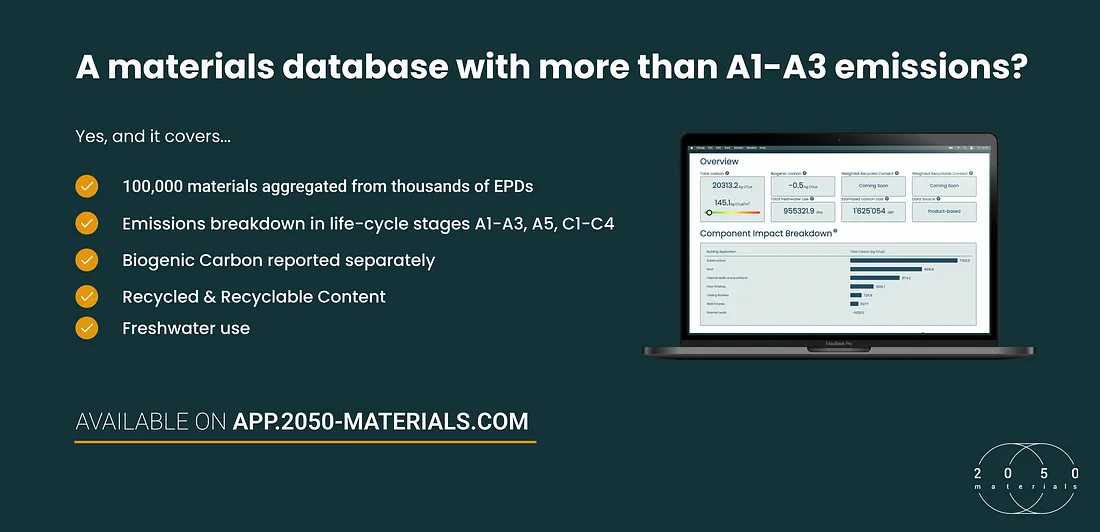
Illustration Showcasing 2050 Materials Platform
Cost & Performance
There are now efficient options for products that fulfil cost and performance criteria while putting health first.
Project teams, for example, can use healthier paint and insulation products that are designated green and yellow with little to no financial impact. Certain healthier options might come with a price premium, but this is typically avoidable with ingenious cost-cutting strategies like these:
Bulk purchasing: To coordinate larger buy volumes that save costs, several groups are collaborating on procurement tactics.
Manufacturer discounts: Tax-exempt or discounted prices may be requested by nonprofit organizations.
Examine materials before investing heavily: CommonBond Communities installed linoleum in common areas so they could have firsthand experience with the upkeep and durability of a new flooring material with a low and acceptable risk.
Reducing waste: First Community Housing makes up for the increased expense of linoleum by meticulously planning each apartment unit’s footprint to fit the dimensions of the floor planks.
By reducing product waste, this method not only lowers the quantity of flooring that is bought but also keeps virgin materials out of the landfill.
Whole Life Cycle: Health of Residents and Other Parties

Illustration taken from Habitable’s report
Disproportional damage to populations that are vulnerable
In comparison to primarily white areas, BIPOC communities have a higher concentration of pollution sources (such as manufacturing plants), polluting businesses, and contaminated sites as a result of decades of institutional racism and racist practices like redlining. Simultaneously, these populations are the most susceptible to these pollutants because of socioeconomic disparities that stem from discriminatory laws and practices, which affect their capacity to maintain their health and wellbeing.
Children are particularly vulnerable to chemical exposures from the goods in their homes and schools, as well as from industrial pollution in the area. Their bodies and cells are constantly growing, starting in the womb and continuing into puberty. Chemical exposures have the potential to disrupt hormone systems, harm organs, and raise the risk of children malignancies like leukemia and neurological conditions like ADHD.
The chemicals in a mother’s environment have an effect on unborn children, and studies have shown that hundreds of industrial pollutants can be present in umbilical cord blood. The evidence is indisputable: early exposure to harmful substances can result in serious adverse conditions that may have long-term effects on health.
Harmful impacts across ecosystems
Toxic chemical pollution of the environment is a major global contributor to a number of problems.
Reduced property values in and near contaminated areas, lost food production and revenue due to agricultural contamination, and expensive cleanup costs are all consequences of environmental contamination.
Worldwide, chemical contamination is also having a disastrous effect on ecosystems and species. Flame retardants used in plastic foam insulation, for instance, can travel great distances and have been discovered even in far-off places like the Arctic. Materials used in synthetic turf, which are found in the accompanying runoff water, are poisonous to the environment and especially fish.
 “Chemical pollution threatens ecosystem functions by adversely affecting pollinators, contributing to ocean dead zones, accelerating antimicrobial resistance, and increasing pressure on coral reefs,” the United Nations Environment Programme states
“Chemical pollution threatens ecosystem functions by adversely affecting pollinators, contributing to ocean dead zones, accelerating antimicrobial resistance, and increasing pressure on coral reefs,” the United Nations Environment Programme states
Act Now
As a general rule: advance from Products with Red Rankings! Work needs to be done and action needs to be taken.
Make sure your next affordable housing initiative aligns with your basic principles. Eliminate from your material specifications any product kinds that are scored red by Informed™ to demonstrate your commitment to combating enduring social injustices. Choosing materials with orange and yellow rankings will nevertheless have a significant positive impact on the health of a building and the communities it touches at every point of its life cycle, even if you are unable to completely switch to green-ranked products.
Your choices now will have a lasting effect on the world that we live in tomorrow and the generations that follow. Let’s collaborate to make it happen!
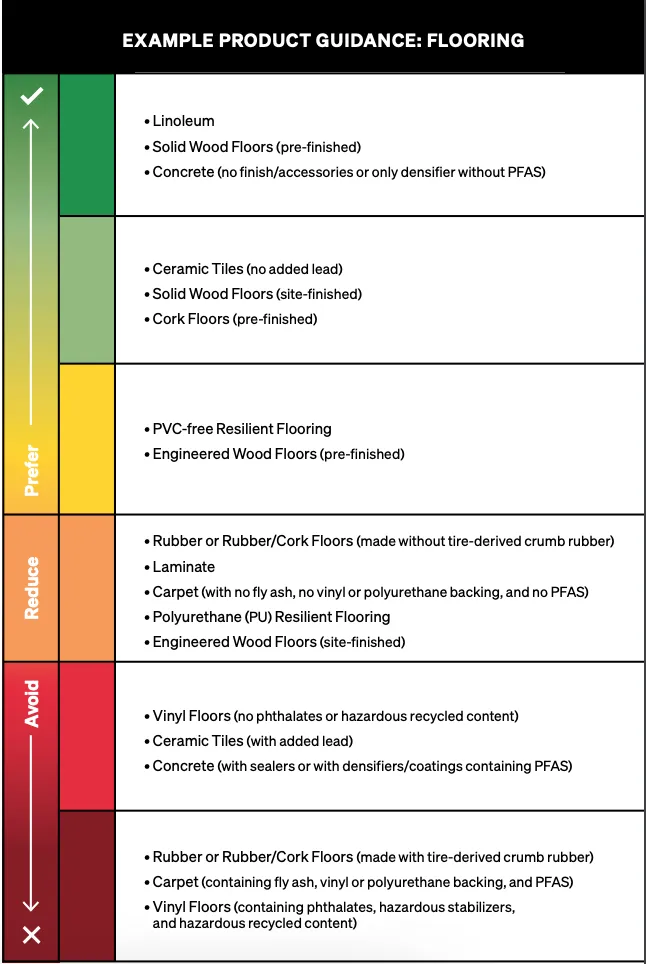
Product Guidance Flooring Example Illustration from Habitable’s Report
2050 Materials’ Role in improving health & equity
By providing a vast library of beautiful building materials with sustainable properties and comparison tools, 2050 Materials is enabling architects, designer and developers build greener communities.
By registering on app.2050-materials.com you can access:
- Our product library with over 100,000 products populated with sustainability data from EPDs and other certifications
- An easy to use comparison feature to objectively compare product sustainability
- Access to our LCA/carbon tool & our embodied carbon optimiser
- Easy unit conversion
Sign up for free to get access to all the tools that will help you design and build using products with sustainable properties.
Sources:
Advancing Health and Equity through Better Building Products — Habitable
Global Status Report 2017 — World Green Building Council
Addendum to Criterion 5.2b — Moving to Zero Energy: Near Zero Certification — Enterprise
Green Communities Criteria & Certification — Enterprise
The Easy Way to Select Healthier Building Products — Informed
Creating The Healthiest Nation: Health and Housing Equity — American Public Health Association
Instructions for Performing a Multifamily Property Condition Assessment — Fannie Mae
Related articles

Climate-Resilient Materials for the Built Environment: A Data-Centred Prime
As climate volatility intensifies, resilience metrics are fast becoming as critical as carbon data in material selection. This article outlines why adaptation is now a design imperative, how materials can be evaluated through a systems lens, and what KPIs project teams should demand. From self-healing concrete to fire-rated façades, we present a structured taxonomy of resilient materials, explain how to embed this intelligence into digital design workflows, and propose next steps for specification, benchmarking, and procurement.
Read more
The Most Interesting Low Carbon Products in Office Design
In this article and collection, we highlight 11 outstanding products that contribute to a lower carbon footprint in office design.
Read more
Top Low Carbon Building Boards: Performance, Benefits, and Use Cases
The building boards highlighted in this article and collection showcase low-carbon innovation in modern construction.
Read more